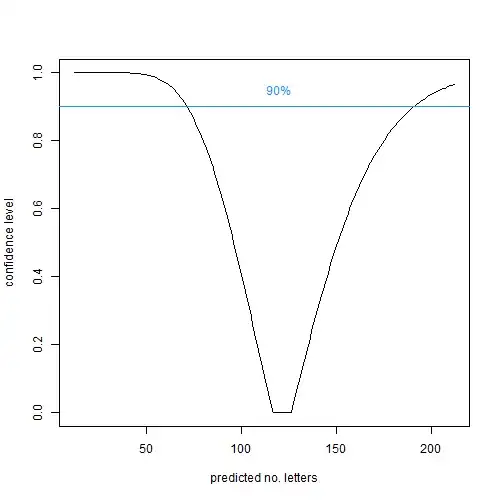I am trying to get prediction intervals around a sampled count variable.
For example, say I want to know the number of letters an apartment building receives every day. Each day I record the count from ten different apartments in the building, out of 100 total apartments, and get for example (toy data) [0, 5, 2, 0, 0, 1, 4, ...], which would represent seven days worth of total letters for those ten apartments. I can collect this over many days. (Note: I realize mail isn't delivered on Sundays, etc, but for now let's just assume it's all the same.) Let's assume this data comes from a Poisson distribution. I know I can get lambda from the data (just take mean). What I'm not sure of is how to calculate those prediction intervals for the full building. In my example, I have sampled only 10% of the building. Do I just multiply the limits of my intervals by 10? I suspect no, but I'm not sure where to make the change.
I want to be able to say, for example, "on this day, 9 letters were delivered to my sample apartments, so I think x many letters were delivered to the whole building, and my 95% prediction interval is (x-y, x+y)". Where my guess is x = 90, but I'm not sure how to get y.
Note: this originally asked about confidence intervals but I was advised to change it being that that isn't really what I was asking.
